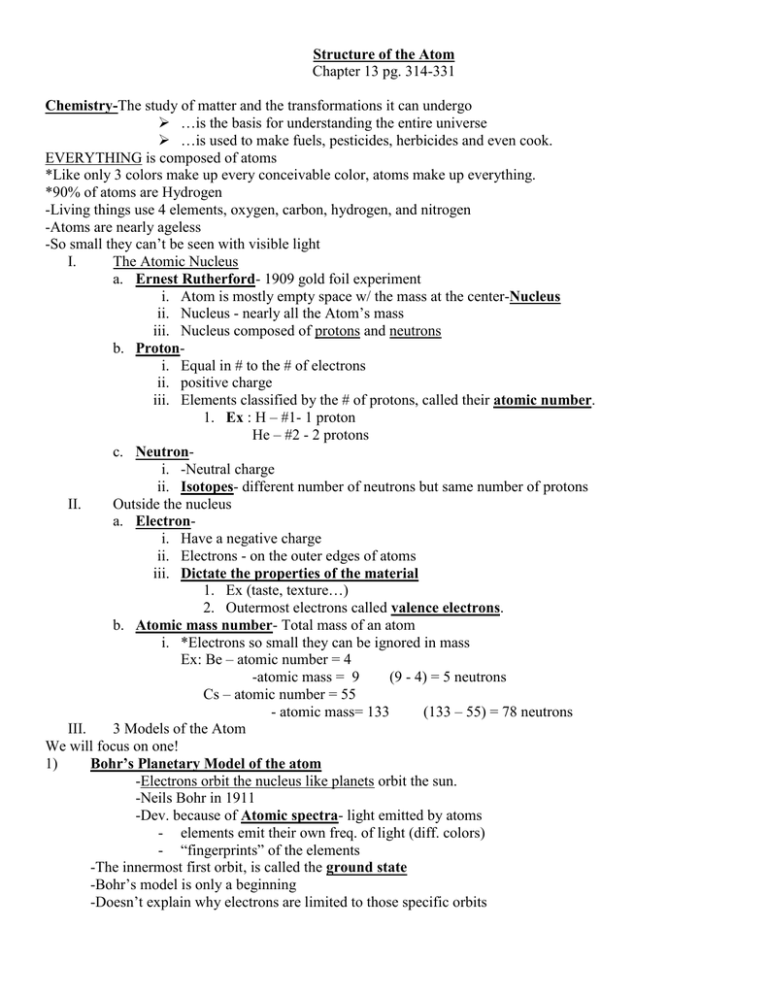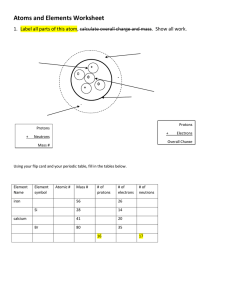Structure of the Atom Chemistry- Chapter 13 pg. 314-331
advertisement

Structure of the Atom Chapter 13 pg. 314-331 Chemistry-The study of matter and the transformations it can undergo …is the basis for understanding the entire universe …is used to make fuels, pesticides, herbicides and even cook. EVERYTHING is composed of atoms *Like only 3 colors make up every conceivable color, atoms make up everything. *90% of atoms are Hydrogen -Living things use 4 elements, oxygen, carbon, hydrogen, and nitrogen -Atoms are nearly ageless -So small they can’t be seen with visible light I. The Atomic Nucleus a. Ernest Rutherford- 1909 gold foil experiment i. Atom is mostly empty space w/ the mass at the center-Nucleus ii. Nucleus - nearly all the Atom’s mass iii. Nucleus composed of protons and neutrons b. Protoni. Equal in # to the # of electrons ii. positive charge iii. Elements classified by the # of protons, called their atomic number. 1. Ex : H – #1- 1 proton He – #2 - 2 protons c. Neutroni. -Neutral charge ii. Isotopes- different number of neutrons but same number of protons II. Outside the nucleus a. Electroni. Have a negative charge ii. Electrons - on the outer edges of atoms iii. Dictate the properties of the material 1. Ex (taste, texture…) 2. Outermost electrons called valence electrons. b. Atomic mass number- Total mass of an atom i. *Electrons so small they can be ignored in mass Ex: Be – atomic number = 4 -atomic mass = 9 (9 - 4) = 5 neutrons Cs – atomic number = 55 - atomic mass= 133 (133 – 55) = 78 neutrons III. 3 Models of the Atom We will focus on one! 1) Bohr’s Planetary Model of the atom -Electrons orbit the nucleus like planets orbit the sun. -Neils Bohr in 1911 -Dev. because of Atomic spectra- light emitted by atoms - elements emit their own freq. of light (diff. colors) - “fingerprints” of the elements -The innermost first orbit, is called the ground state -Bohr’s model is only a beginning -Doesn’t explain why electrons are limited to those specific orbits




